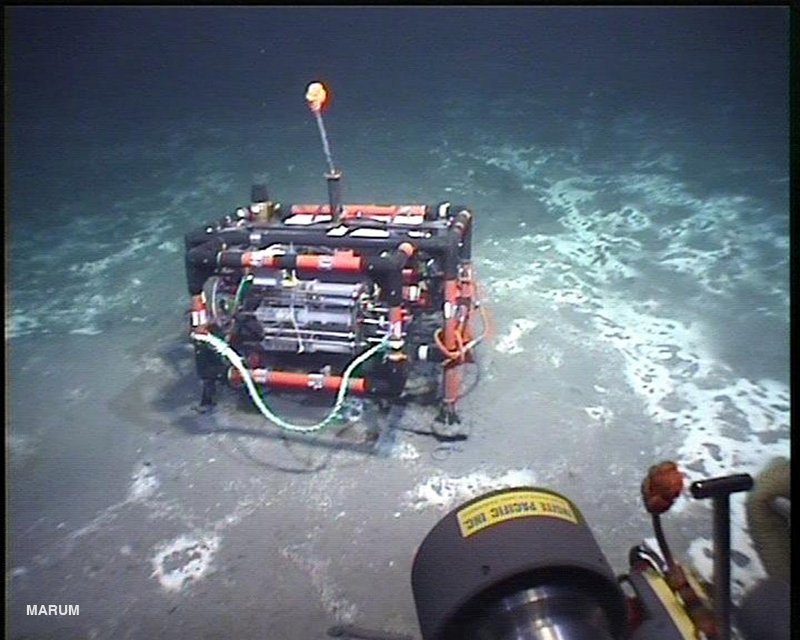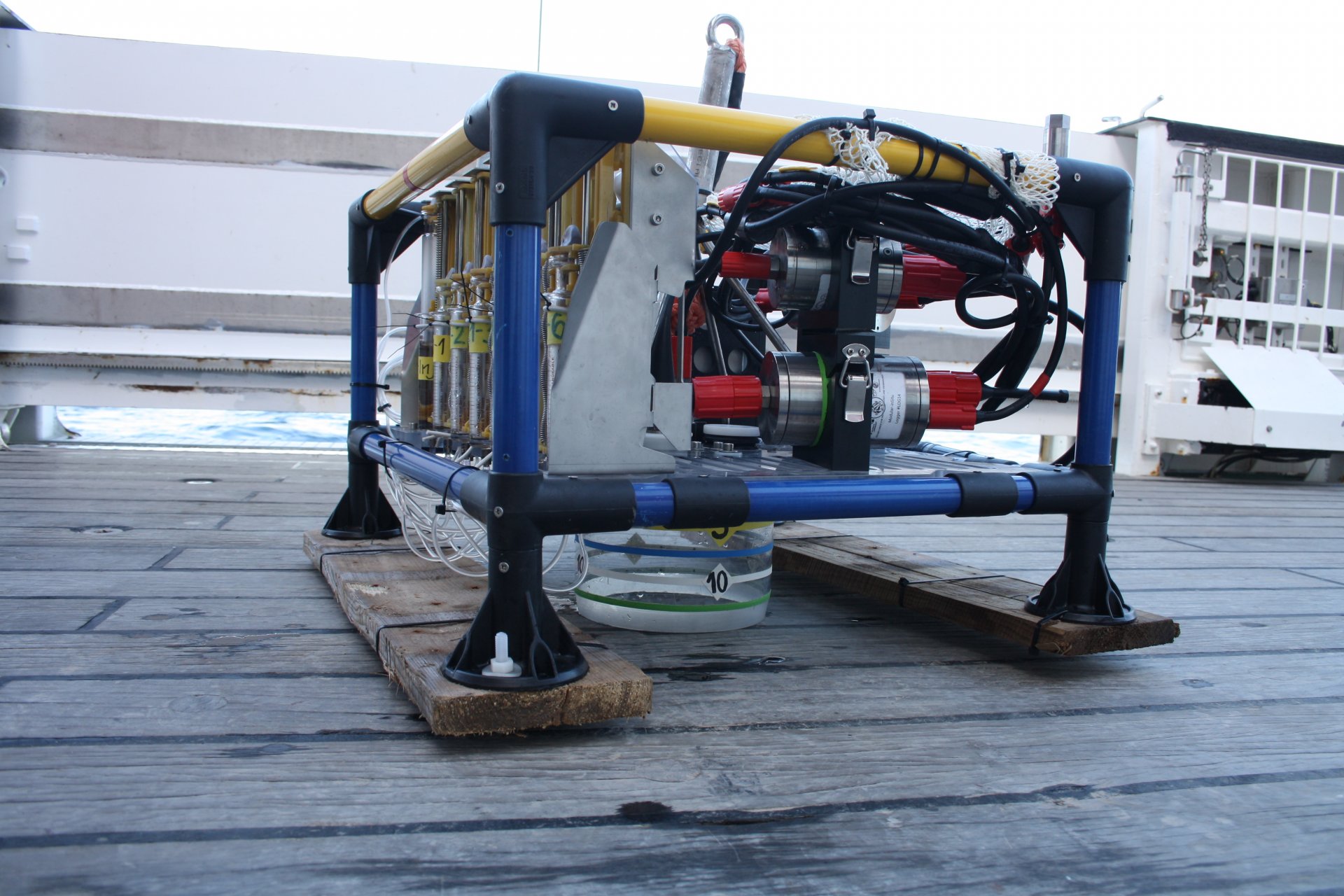Seitenpfad:
- Abteilungen
- HGF MPG Brückengruppe für Tiefsee-Ökologie und -Technologie
- Benthic Chamber Module
Benthic Chamber Module
Die Inhalte dieser Seite sind leider nicht auf Deutsch verfügbar.
Frank Wenzhöfer, Felix Janssen, Axel Nordhausen, Volker Asendorf, Fabian Schramm
In the highly heterogeneous ocean ecosystem, the sediment- bottom water interface represents a boundary zone that connects the two oceanic realms - the sediment and the water column. At the seafloor the sediment-water interface is one of the most important transition zones for solute exchange, both in time and space. The benthic chamber module enables in situ measurements of the total exchange rates (e.g oxygen, methane, nutrients, DIC) between the sediment and the water column. This measurement integrates all relevant solute transport processes (diffusion, advection and fauna-mediated transport).
The instrument
The benthic chamber module consists of a support frame that carries a titanium cylinder, a plexiglass incubation chamber and a syringe sample/injection device. The titanium cylinder houses all electronics, a data acquisition computer, syringe sampler controller and two sensor-amplifiers. The measurement principle is based on in situ incubation of a certain volume of sediment along with well-mixed bottom water, during which the change of concentrations of solutes over time is recorded. The centrally stirred chamber has a diameter of 19 cm and hence encloses an area of 284 cm2 together with 10 - 20 cm high (equivalent to 4-6 l) overlying bottom water. Continuous measurements of the concentration of oxygen and sulfide as well as pH are realized with sensors mounted on the lid of the incubation chamber. The concentration of other components, like dissolved methane, nutrients and DIC is assed via retrieval of discrete samples at pre-programmed sampling intervals from the enclosed water body. These samples and sensor measurements acquired during the incubation period allow assessing the total fluxes and transport rates across the sediment surface. The benthic chamber module is operated by ROVs, which also position the module at the targeted measurement sites. A one-way valve on the lid of the incubation chamber releases the excess of water, caused by the insertion of the chamber in the sediment, ensuring a gentle placement and start of the measurements.
The instrument
The benthic chamber module consists of a support frame that carries a titanium cylinder, a plexiglass incubation chamber and a syringe sample/injection device. The titanium cylinder houses all electronics, a data acquisition computer, syringe sampler controller and two sensor-amplifiers. The measurement principle is based on in situ incubation of a certain volume of sediment along with well-mixed bottom water, during which the change of concentrations of solutes over time is recorded. The centrally stirred chamber has a diameter of 19 cm and hence encloses an area of 284 cm2 together with 10 - 20 cm high (equivalent to 4-6 l) overlying bottom water. Continuous measurements of the concentration of oxygen and sulfide as well as pH are realized with sensors mounted on the lid of the incubation chamber. The concentration of other components, like dissolved methane, nutrients and DIC is assed via retrieval of discrete samples at pre-programmed sampling intervals from the enclosed water body. These samples and sensor measurements acquired during the incubation period allow assessing the total fluxes and transport rates across the sediment surface. The benthic chamber module is operated by ROVs, which also position the module at the targeted measurement sites. A one-way valve on the lid of the incubation chamber releases the excess of water, caused by the insertion of the chamber in the sediment, ensuring a gentle placement and start of the measurements.
Technical details
- Chamber diameter: 19 cm
- Electrochemical sensors: O2, H2S, pH
- Optical sensor: O2
- Syringe sampler: 5 syringes with 50 ml sampling volume
- Incubation duration: max. 34 hours with a small capacity deep-sea battery
- Operation depth: 6000 m

